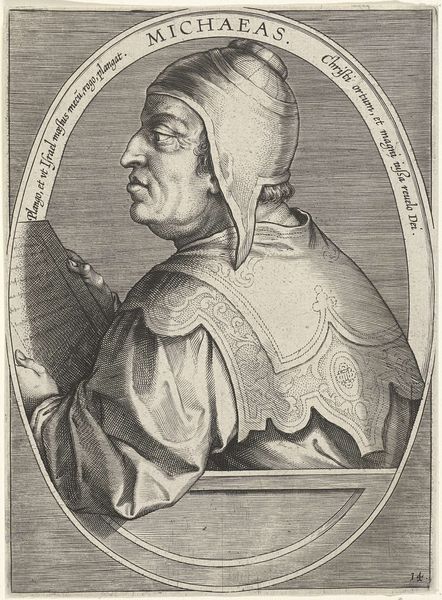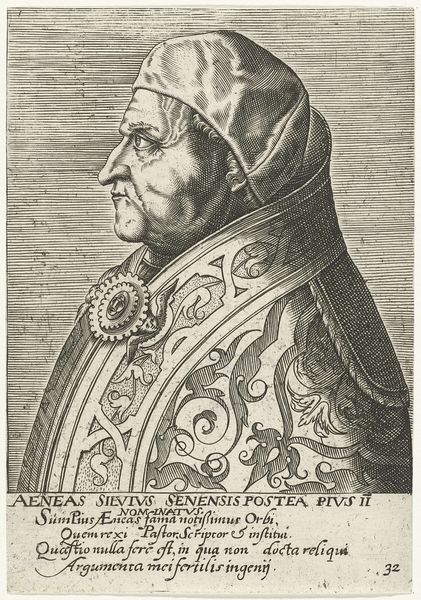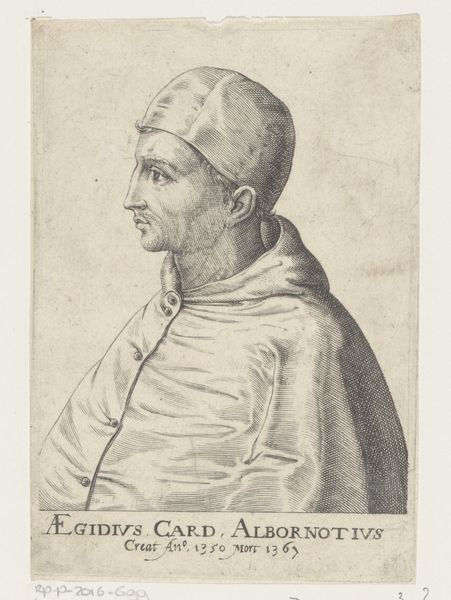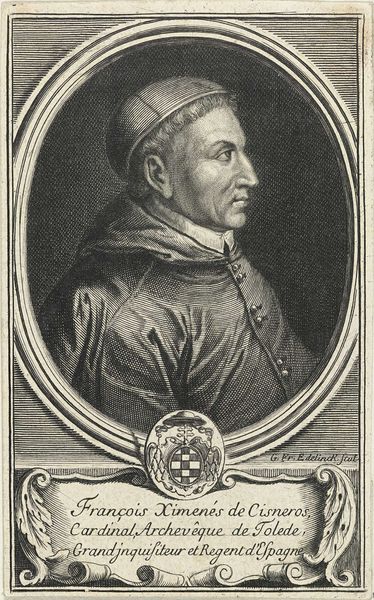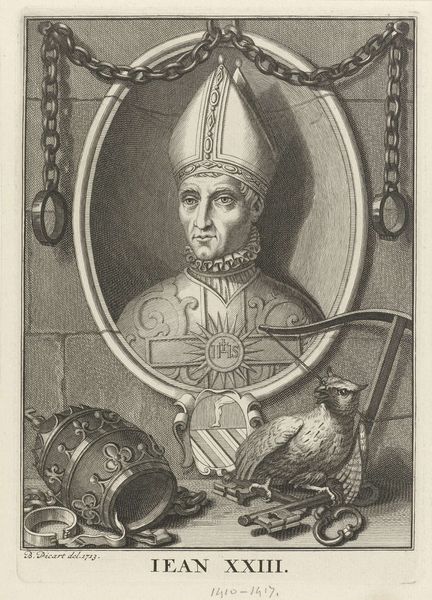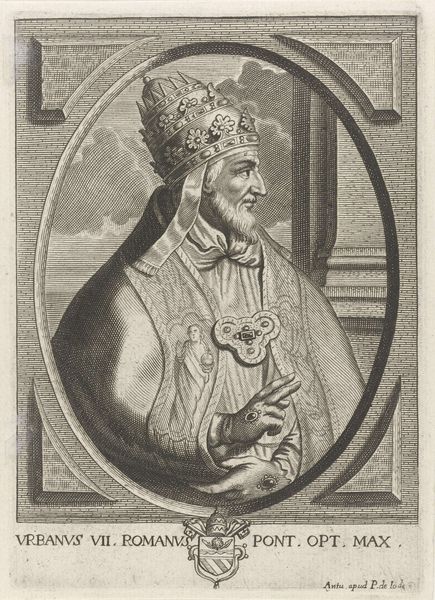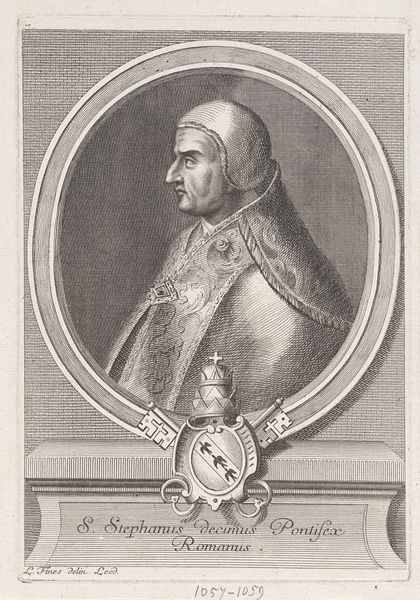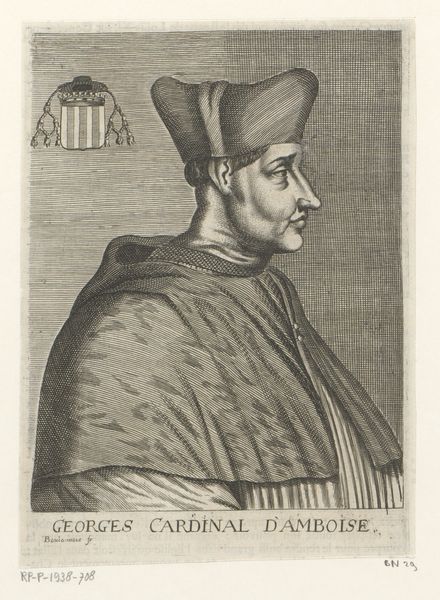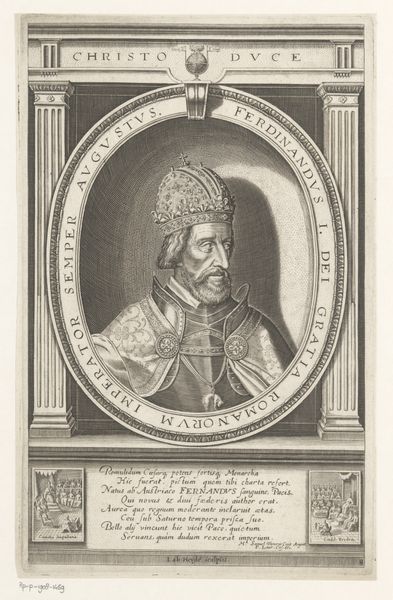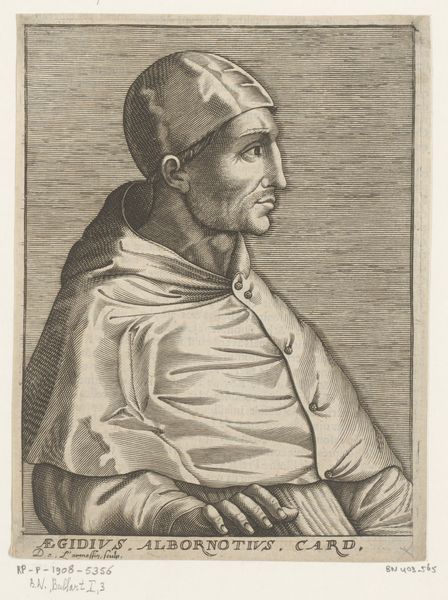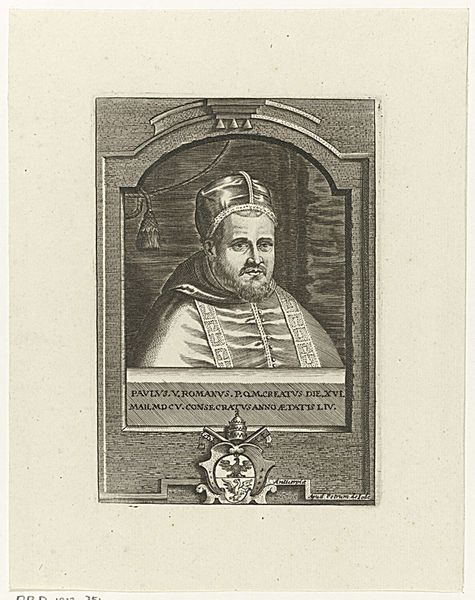
engraving
#
portrait
#
medieval
#
old engraving style
#
portrait drawing
#
engraving
Dimensions: height 175 mm, width 125 mm
Copyright: Rijks Museum: Open Domain
Curator: This is a piece known as "Portret van Ercole I d'Este," dating from somewhere between 1600 and 1604. The artist is Dominicus Custos, and it's an engraving. We're lucky enough to have it here at the Rijksmuseum. Editor: My first thought is just...intensity. The starkness of the engraving really brings out the Duke’s unwavering gaze. It almost feels like he’s staring right through you, doesn’t it? Like he's not giving anything away. Curator: Absolutely. Considering this was crafted a century or two after d'Este's death, it functions more as a symbol, really solidifying his legacy and lineage for those viewing it. Look at the way the Latin inscription around him underscores that, framing him within a broader classical narrative. Editor: I’m struck by how cold the piece feels, yet powerful. It’s all in the details— the rigid lines, the impenetrable armor. I can't imagine him being vulnerable. Did his contemporaries react to these engravings the way we do today, do you think? Curator: It's likely their reading would have been steeped in the specifics of lineage and power—a symbolic consolidation, intended to solidify his reign, yes. Editor: It is just fascinating how the medieval gives off something unapproachable here. Yet even in its stoicism, there is still a strange, artistic energy that jumps out to me. Curator: A calculated image, carefully cultivated and rendered through print for dissemination and endurance—perhaps that's where the energy lies. Editor: Absolutely. It almost makes one wish there was a color version of this though to give it more vibrance, but perhaps it is this lack of color that captures more of this man's true persona, which now has an element of being timeless. Curator: I think that stark black and white enhances his presence and emphasizes how far he reaches from the past in the world that we occupy today. It speaks volumes about art's capability of creating icons and constructing enduring narratives. Editor: Agreed. Every line in this portrait tells its own story. The coldness that radiates captures some quality of permanence or, frankly, immortality, while maintaining a clear essence of that original spirit. It remains.
Comments
No comments
Be the first to comment and join the conversation on the ultimate creative platform.

